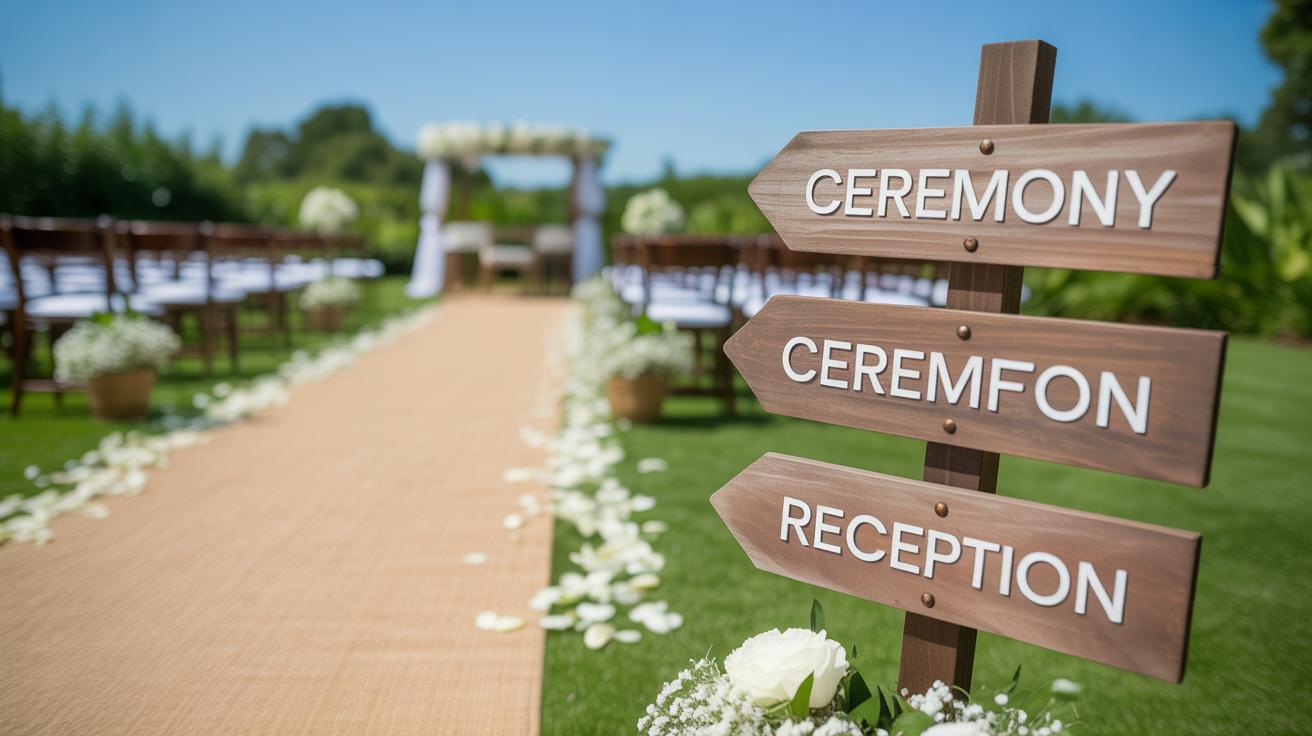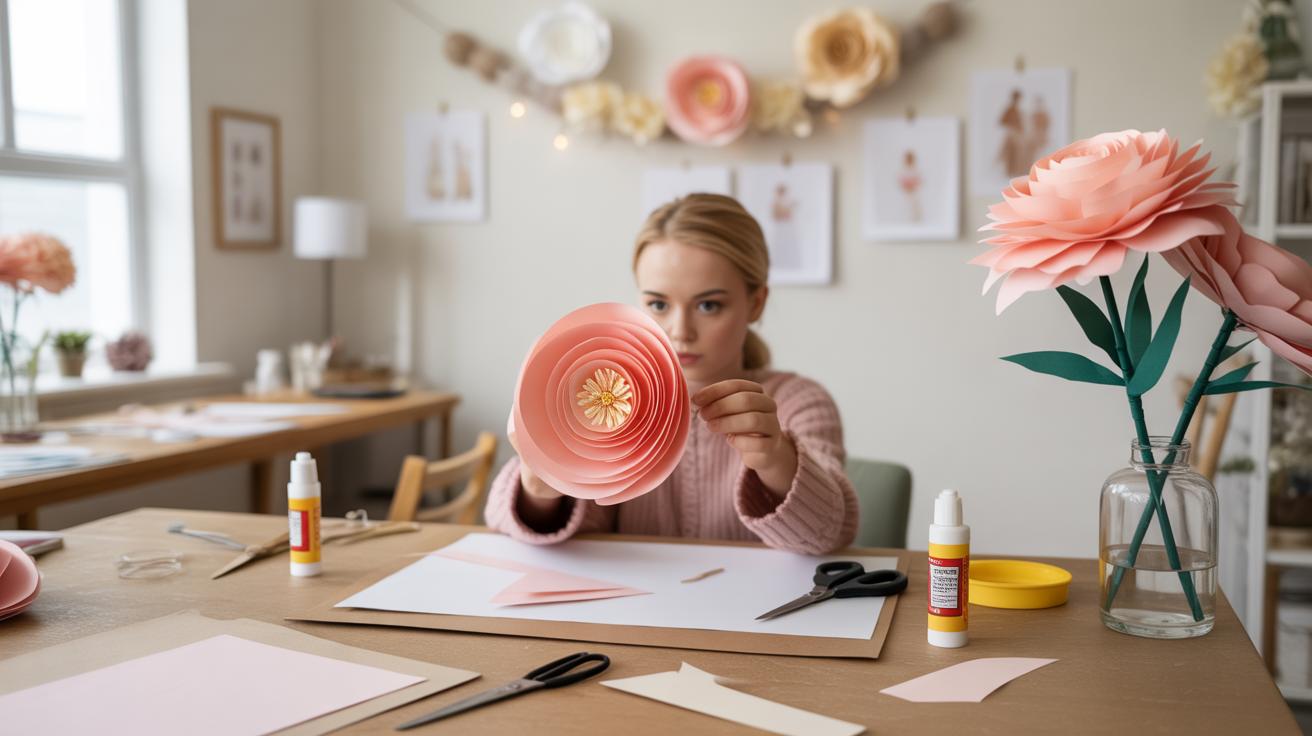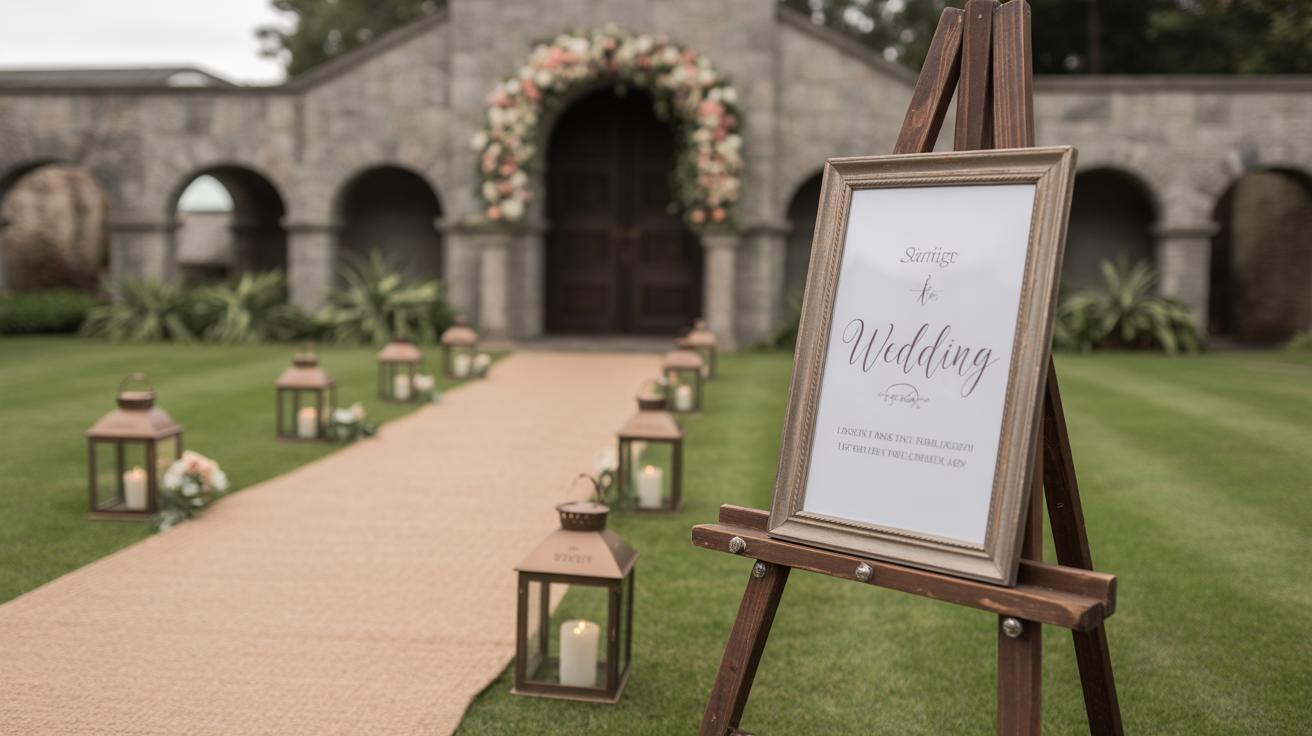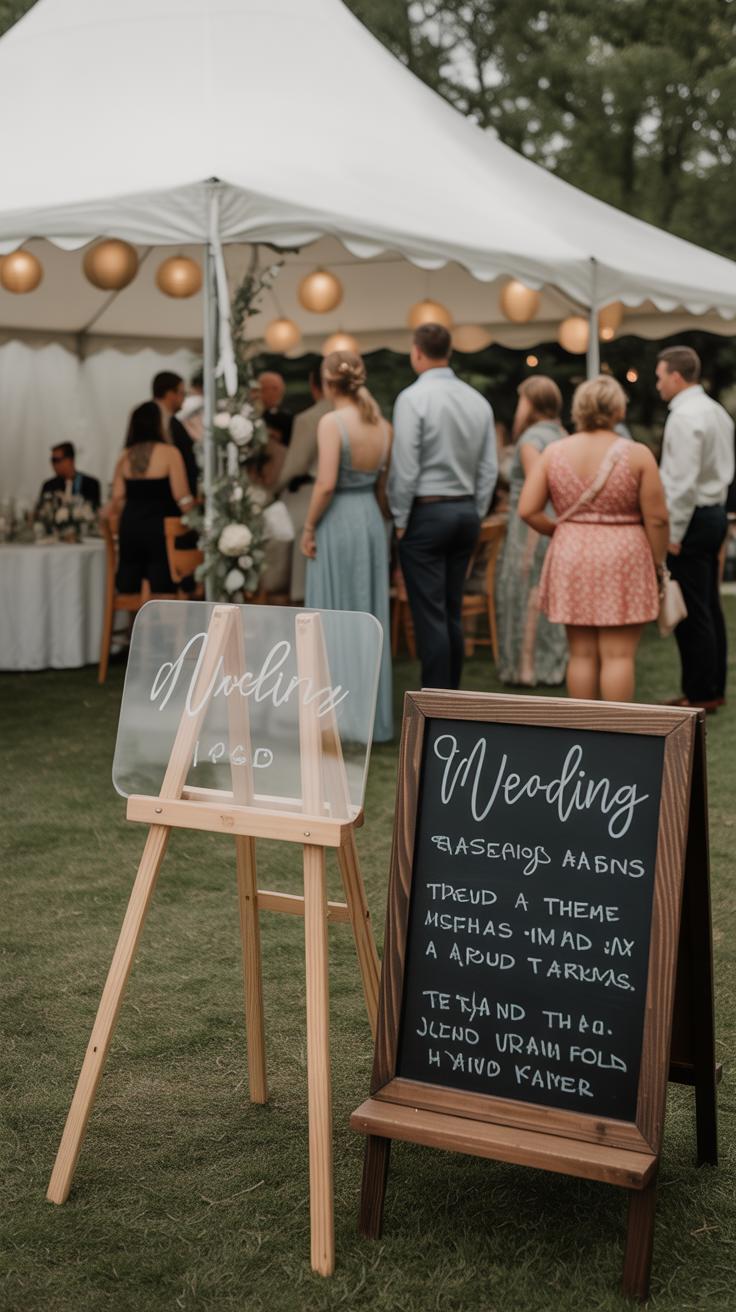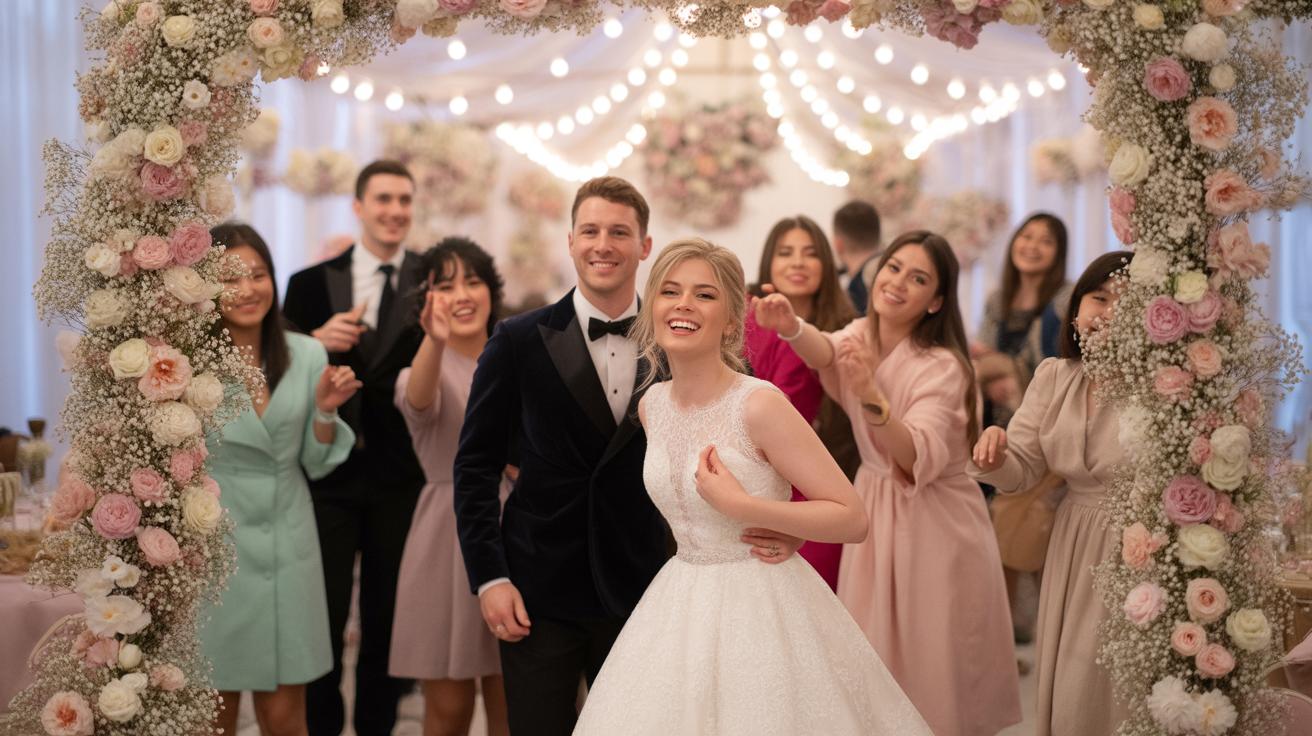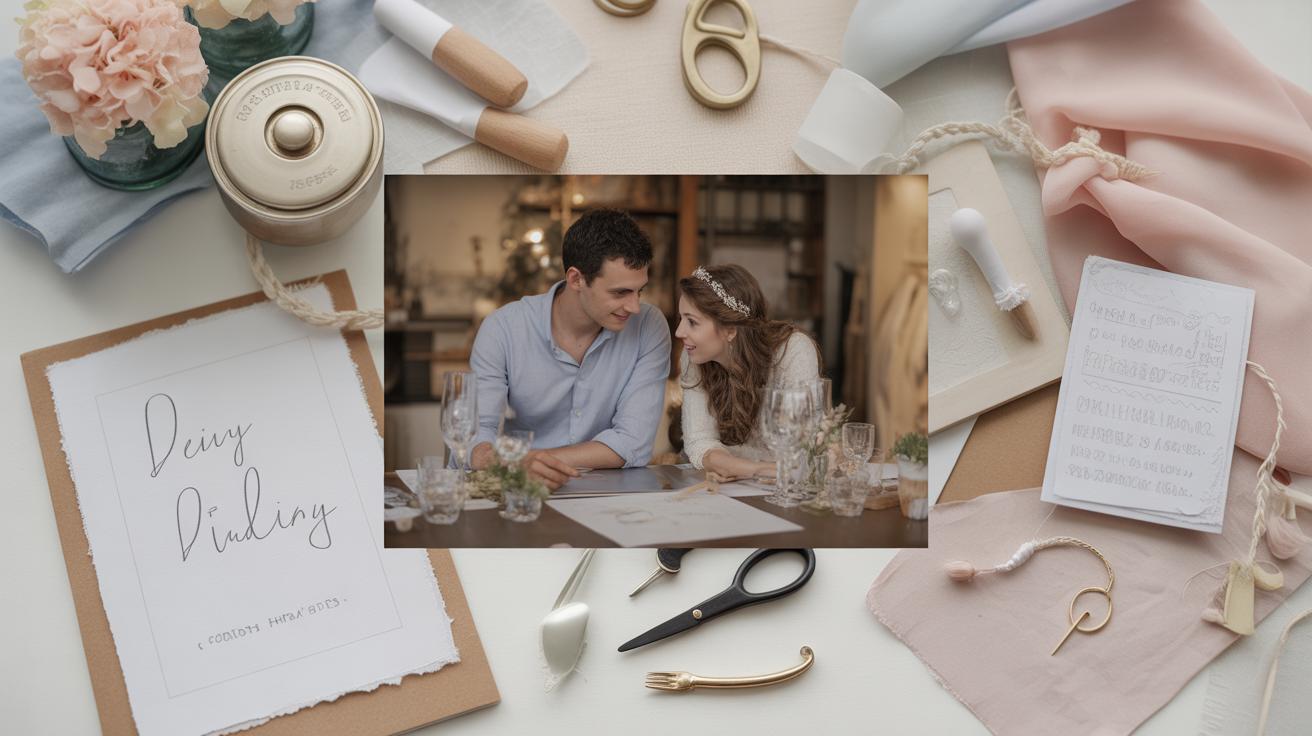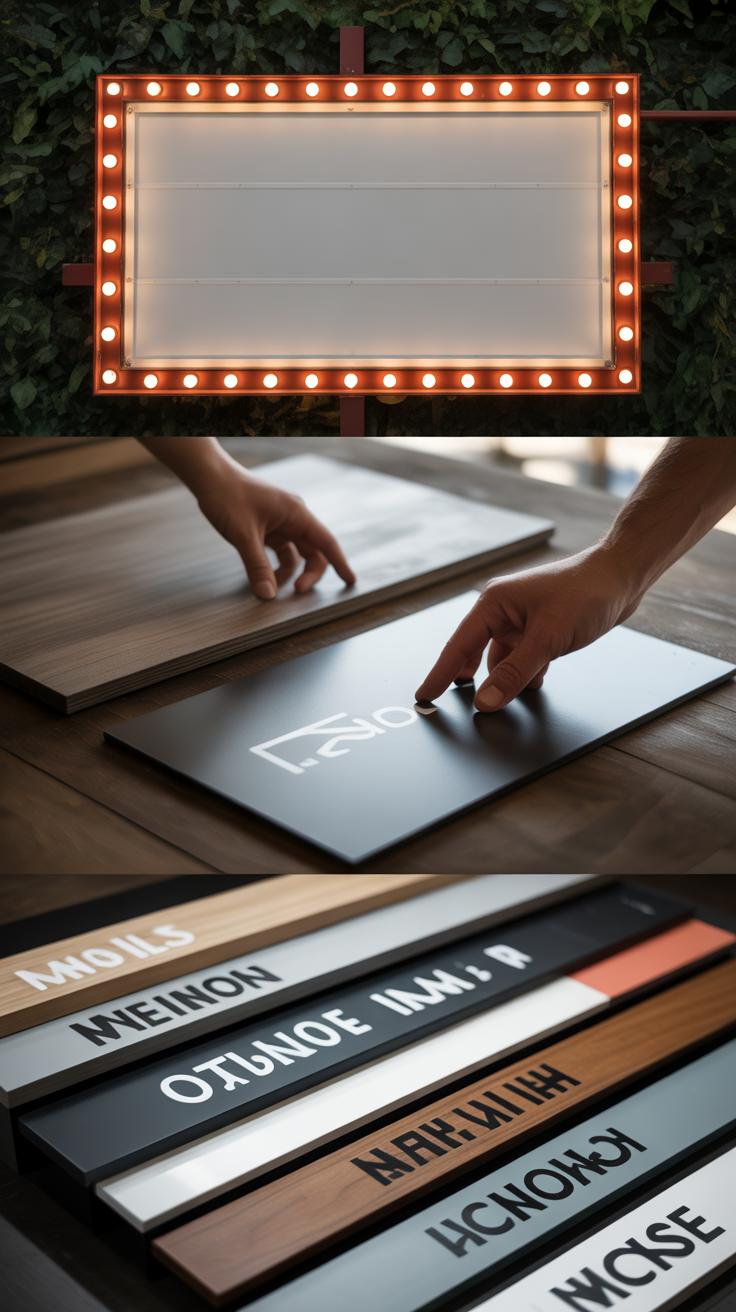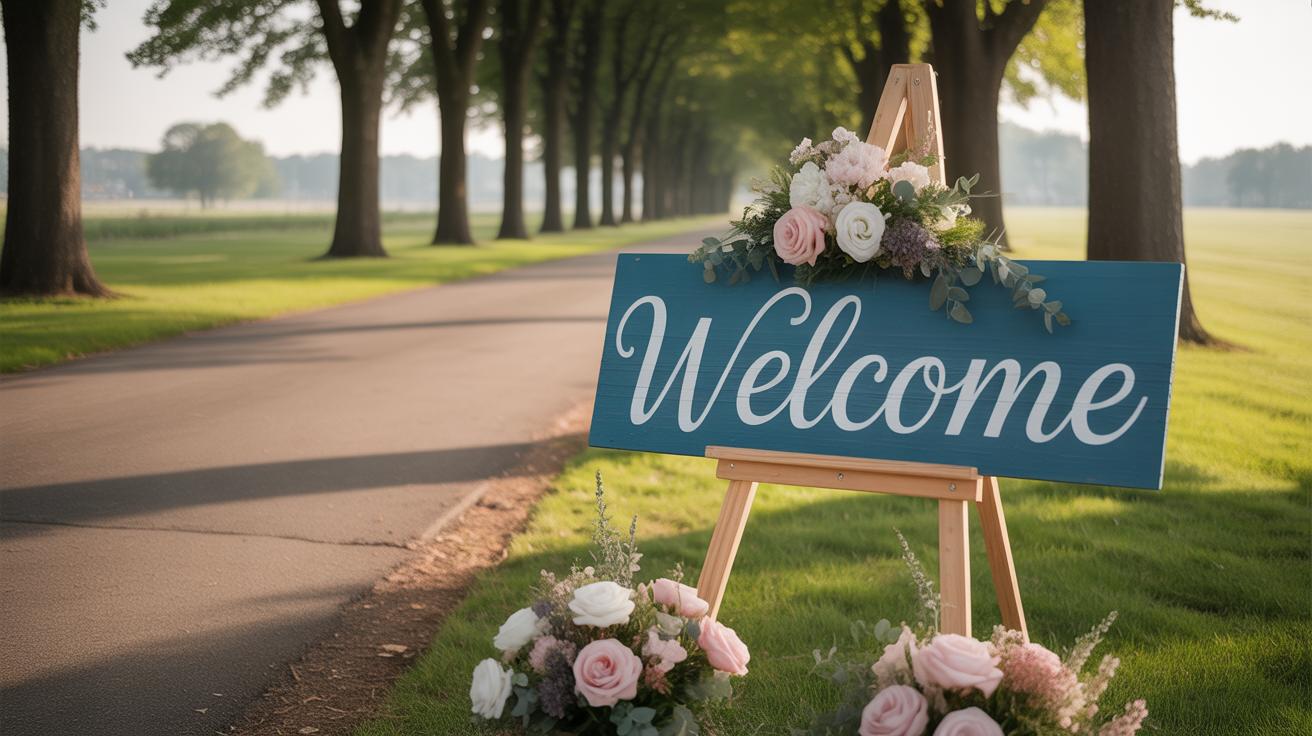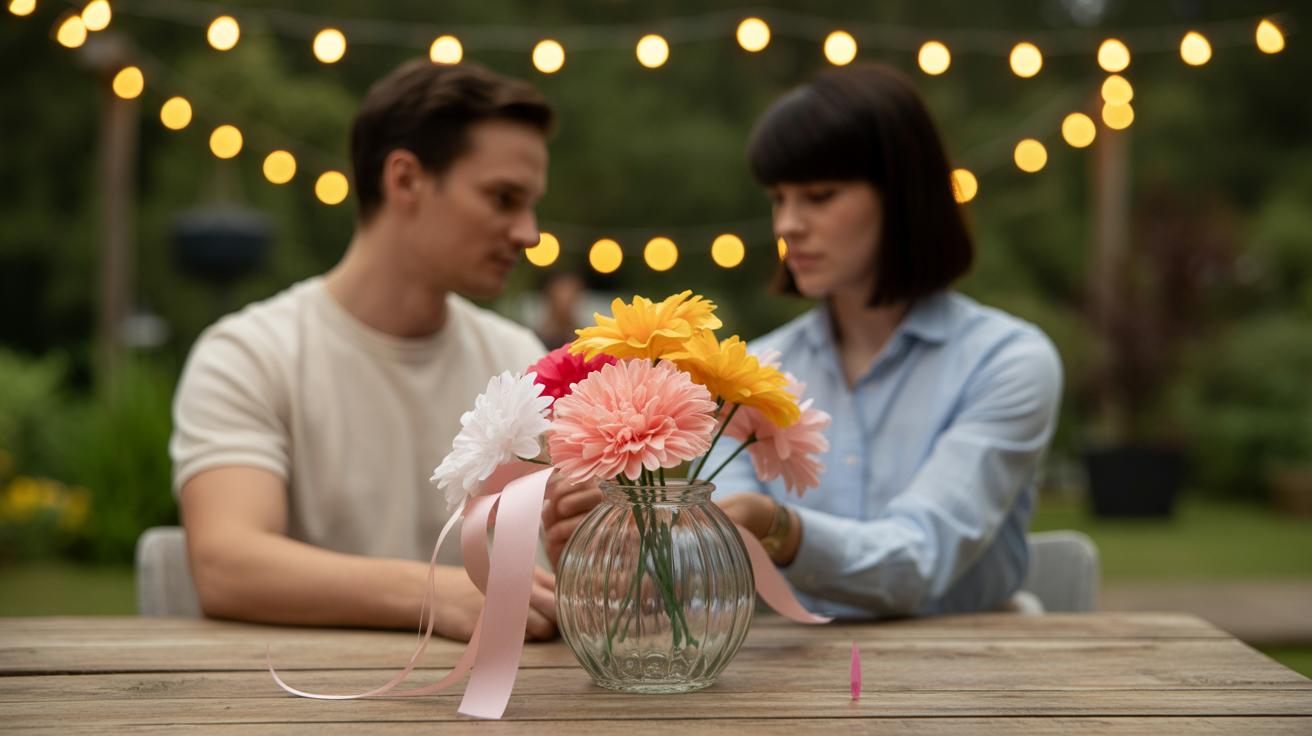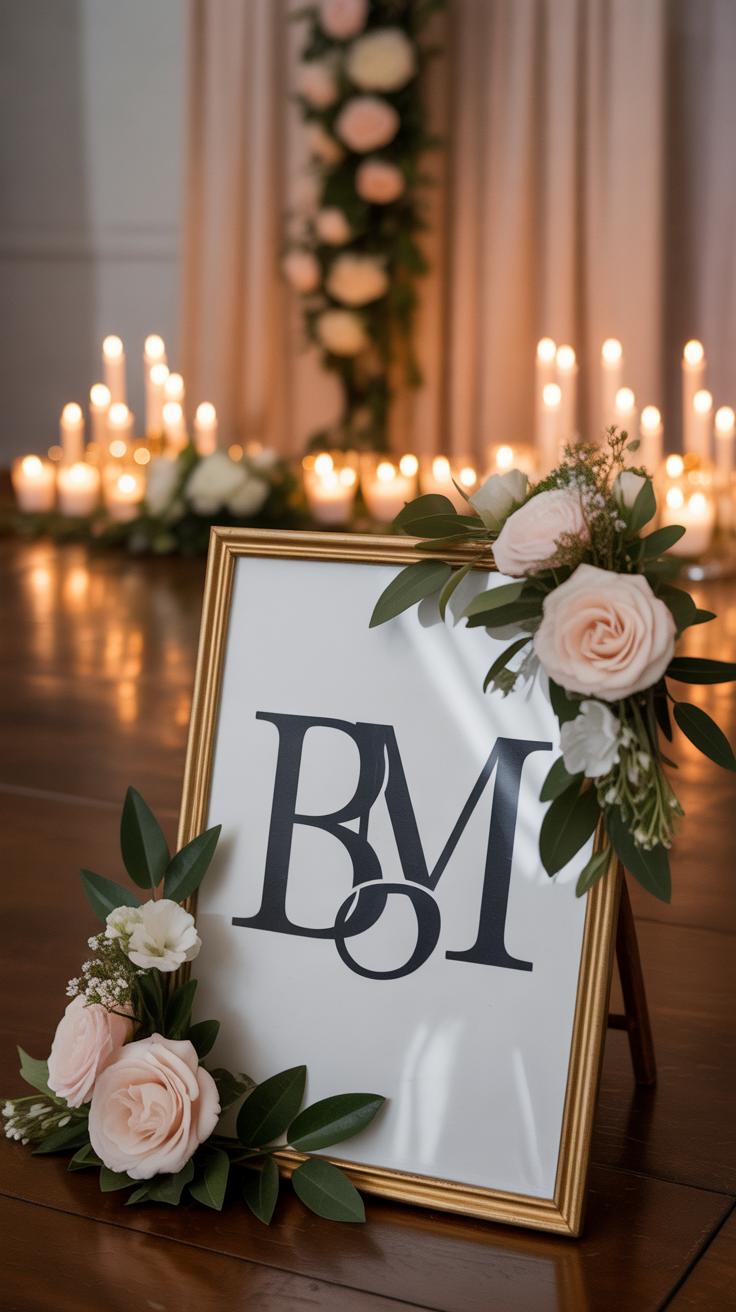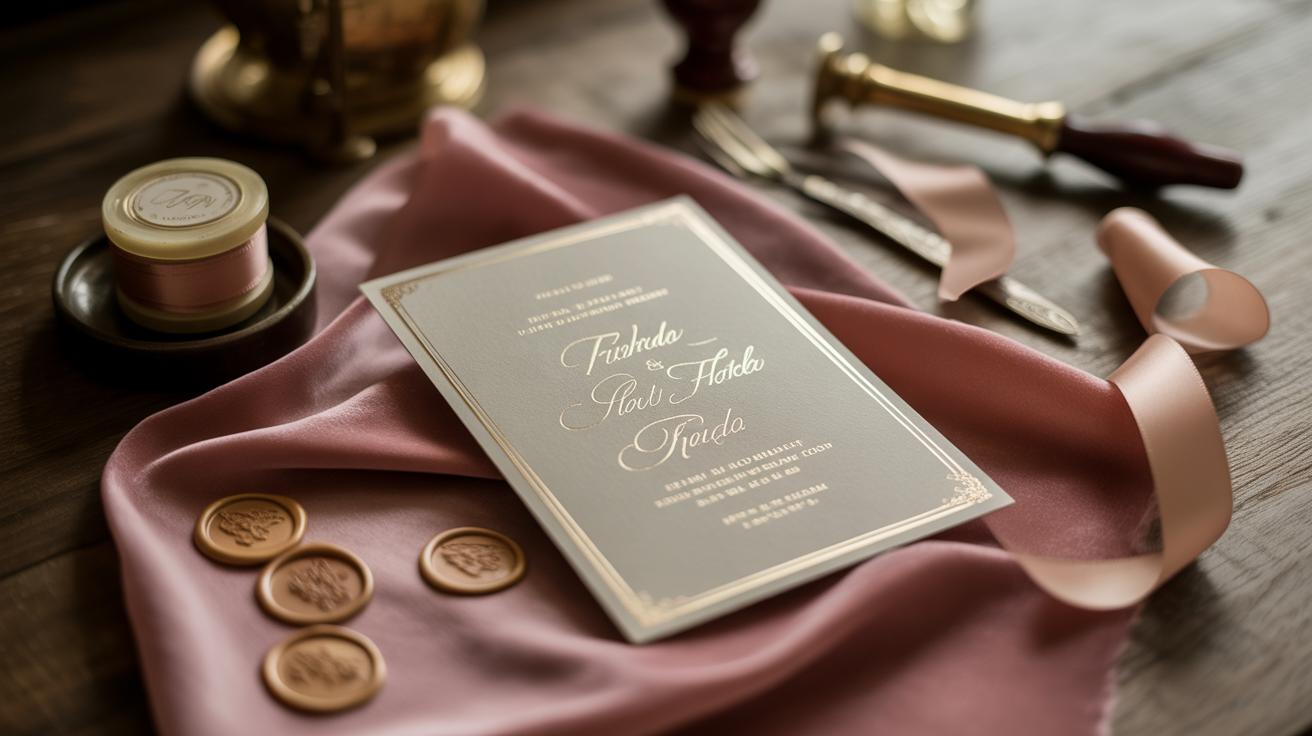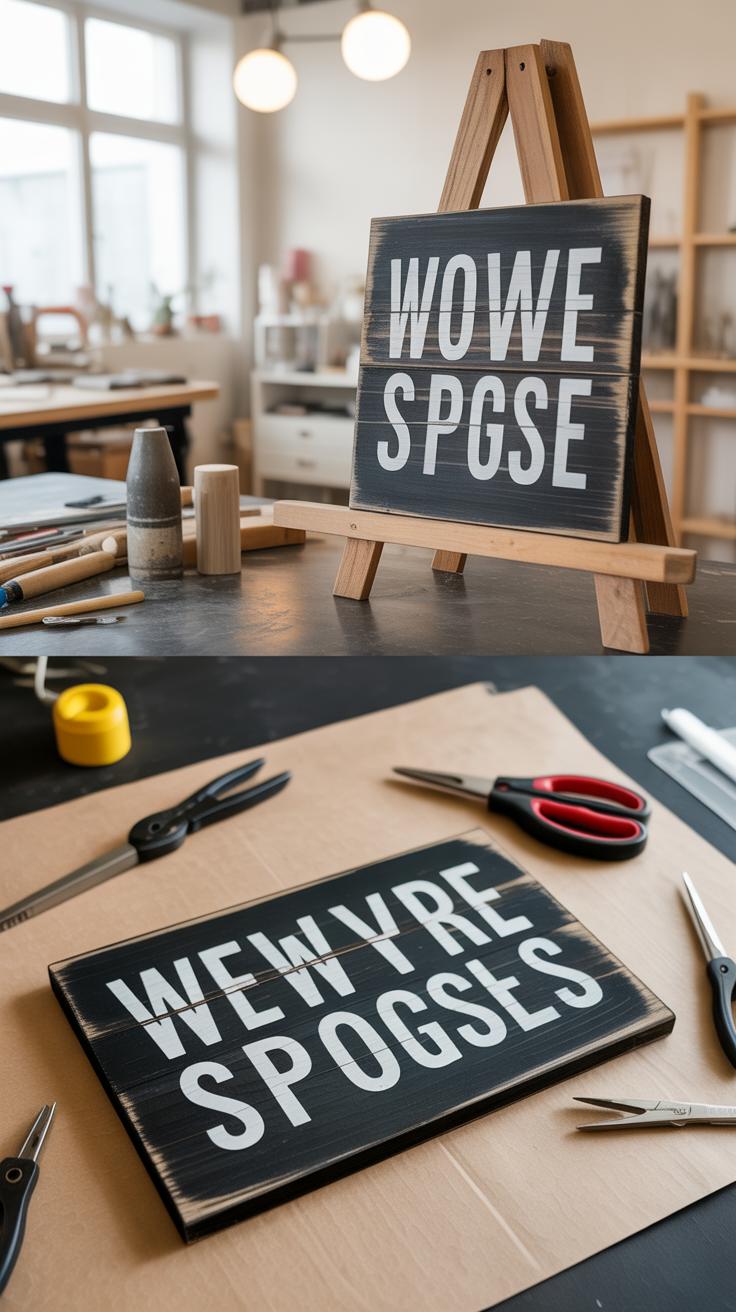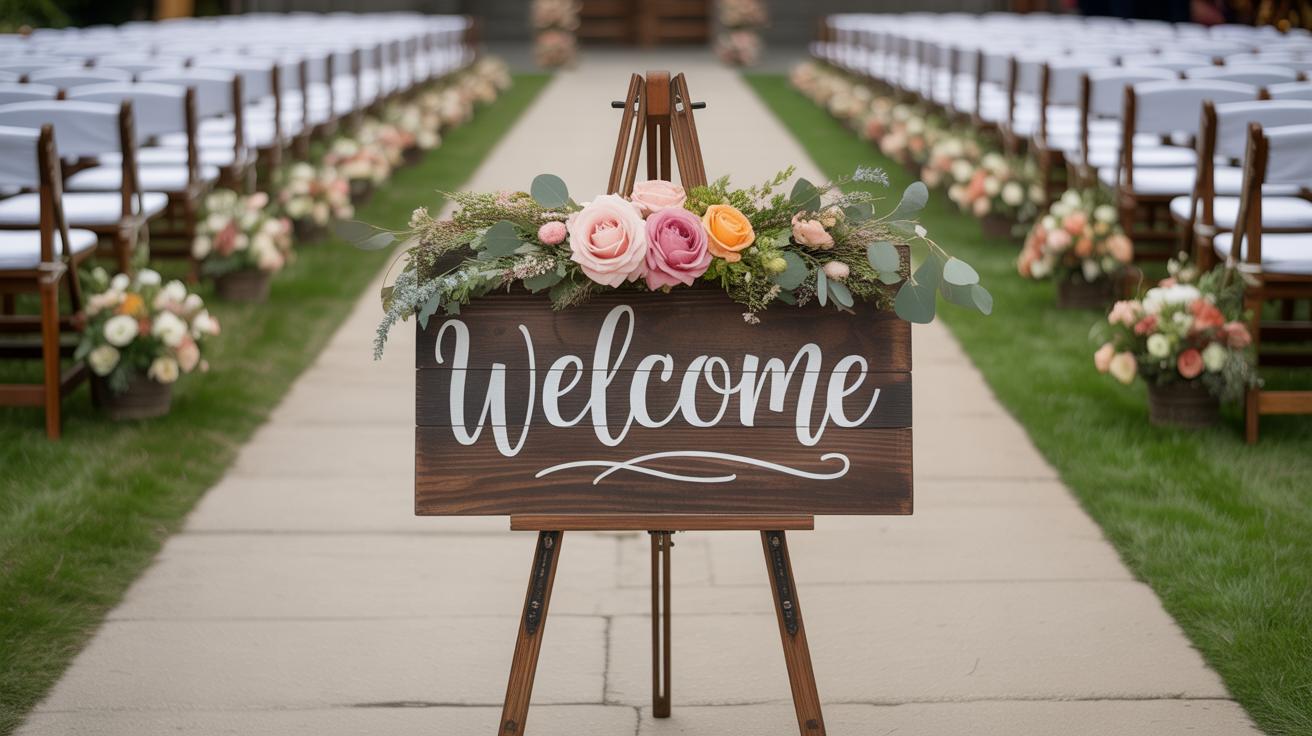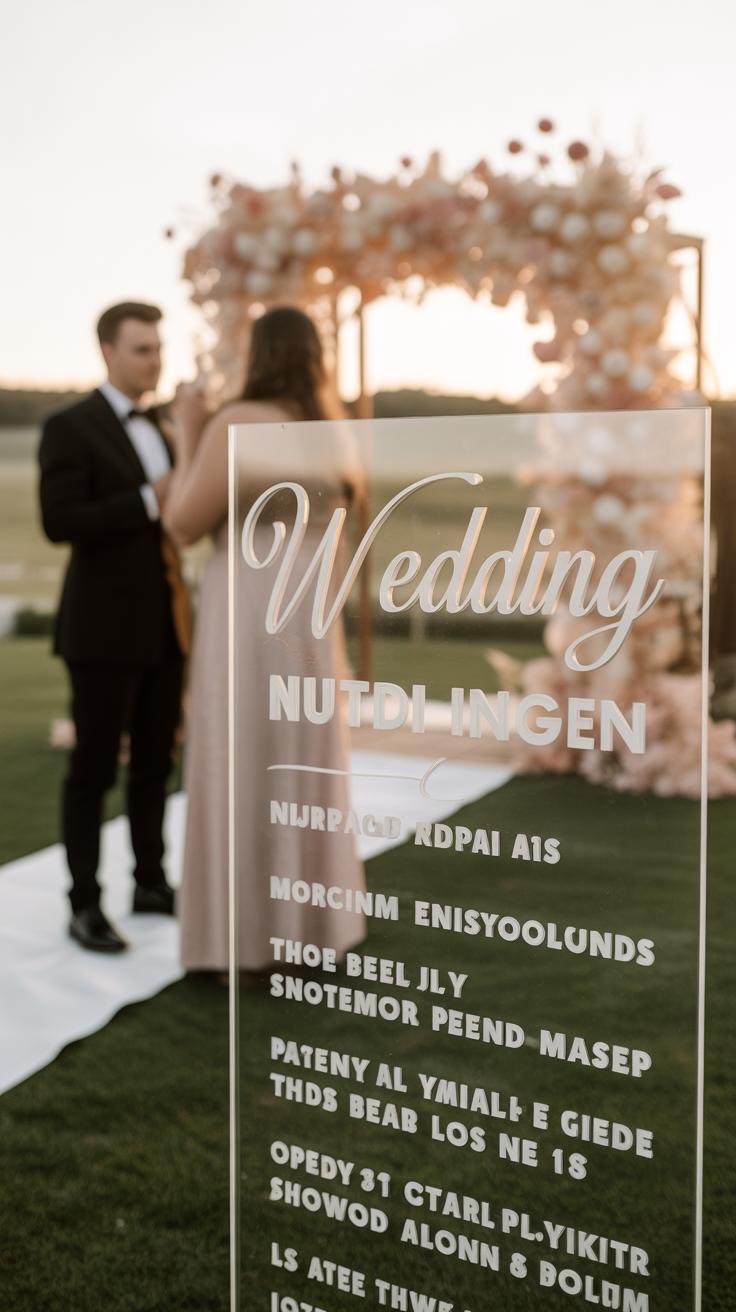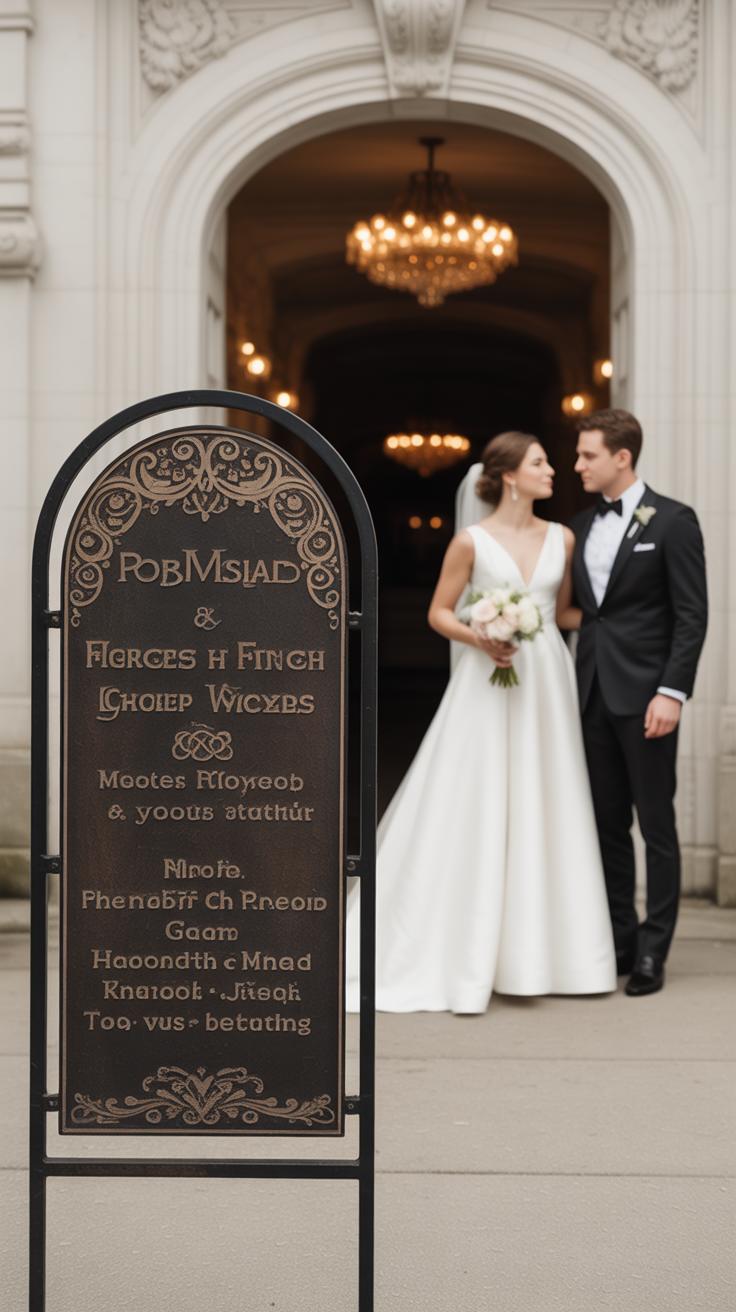Introduction
Wedding signs are an important part of every celebration. They guide your guests, add style, and help keep your day organized. From directing guests to the ceremony to letting them know about the different parts of your day, signs serve many purposes.
In this article, you will learn about various types of wedding signs. We will explore how to choose the best signs for your wedding and give you ideas to make them special. Whether your wedding is big or small, simple or fancy, wedding signs can help you create the perfect flow and add a personal touch.
Understanding the Role of Wedding Signs
Wedding signs are more than just pieces of decorated wood or printed cards scattered around your venue. They serve as practical tools designed to help guests find their way, get information, and sometimes even offer a momentary pause to absorb or reflect. Think of them as subtle guides—quiet but persistent—nudging guests in the right direction without the need for constant verbal instructions.
People often underestimate how confusing it can be for guests to navigate a wedding space, especially if it’s a large venue or has several event areas. Signs fill that gap, preventing awkward moments where someone is clearly lost or wandering. At the same time, well-placed signs contribute to the event’s mood, reinforcing your theme or tone without a word spoken.
So, why should you pause and give signs a second thought? Because their importance goes beyond mere function. They shape experience subtly but greatly, and they can reassure guests, making every transition feel smoother, almost effortless.
Why You Need Wedding Signs
Practical reasons for having signs at your wedding are plenty. Without them, imagine the morning chaos if guests don’t know where to park or where to wait for the ceremony. Signs provide clarity, reducing confusion and frustration.
- Direct guests from parking lots to entrances.
- Indicate locations for ceremonies, receptions, or photo booths.
- Inform attendees about schedules or special requests—like unplugged ceremonies or no-smoking areas.
- Help vendors and family members find their spots without bothering the hosts.
In my own experience attending weddings without signs, I’ve felt lost or out of place. Something as simple as a welcome sign can shift that feeling immediately, making guests feel seen and cared for. So yes, signs are practical, but they also extend a quiet hospitality.
How Signs Add Style to Your Wedding
Wedding signs don’t just offer guidance; they also say something about your style. The materials you choose, the fonts, the wording—all create a visual language that speaks to your wedding’s personality. Rustic wooden signs can bring warmth and charm. Minimalist acrylic signs feel modern and chic. If you’re going for whimsy, hand-painted chalkboards might do the trick.
Beyond that, signs help set expectations. A bold welcome sign might make guests anticipate a grand event, while a simple understated sign whispers sophistication. They work as a bridge between functionality and decoration, showcasing your taste without shouting.
Sometimes, decorating your signs can be a small detail that guests remember. I recall a friend’s wedding where every sign included a tiny, quirky quote. That little touch made the event feel more intimate, inviting smiles and even compliments.
Types of Wedding Signs You Should Consider
Wedding signs come in various forms, each serving a unique purpose that can make your day smoother and a bit more personal. You might think signs are just for directions, but there’s more variety—and potential—than you’d expect. Here’s a look at some types worth thinking about.
- Directional Signs: These help guests find their way—whether to the ceremony spot, the reception hall, or even the restroom. They’re practical but can also blend with your theme.
- Welcome Signs: Placed at entrances, these greet guests and set a tone. Sometimes they include a little information about the schedule or a note of thanks. It’s like saying, “Hey, we’re glad you’re here,” but in print.
- Seating Charts: Often overlooked, these signs solve one big headache: where should everyone sit? They can be big boards or cleverly arranged cards. The style can influence how relaxed or formal your seating feels.
- Menu Boards: Posting the menu is practical and can entice guests. Plus, it gives a preview of the meal, which some guests appreciate, especially with dietary concerns in mind.
Choosing which signs to include depends on your venue and guest flow. It’s tempting to overdo it, but sometimes simple works best. I remember a friend’s wedding where just a few signs cut down confusion surprisingly well, and guests often commented on how easy it was to navigate.
Directional Signs for Easy Navigation
Directional signs are your event’s silent guides. Without them, guests might wander or feel awkward asking for directions—especially in large or unusual venues. Pointing to major spots like the ceremony, the reception, or restrooms helps keep things on track.
These signs don’t need to be overwhelming. Clear arrows, concise wording, and strategic placement matter more than fancy decorations, although a little style doesn’t hurt. Think about spots guests will naturally be looking at—entrances, intersections, or near parking.
How many signs you need can vary. At an outdoor wedding, you might need more, since locations can be spread out. Indoors, just a few well-placed markers might do the trick. Some couples use multiple small signs instead of one big sign—it’s like giving guests checkpoints during their journey.
Personally, I find that directional signs can relieve a lot of stress. It’s not just about information—it signals care for your guests’ experience. So, don’t skip these, even if your venue feels straightforward. You might be surprised by how helpful they turn out to be.
Welcome and Informational Signs
Welcome signs do more than greet people. They’re the first impression and sometimes the only clue guests get about how the day will unfold. Including key information—like the schedule, or a hashtag for social media—lets guests know what to expect and how to join in.
I once attended a wedding where a single sign included a note about quiet zones, a thank you message, and directions to the bar. It felt thoughtful and useful rather than overwhelming.
Informational signs might cover health guidelines, accessibility notes, or parking tips too. These signs take some guesswork off guests and show you’ve thought things through. That counts for a lot when people are juggling unfamiliar faces and places.
It’s tempting to cram too much info onto one sign, but clarity usually wins out. A concise welcome paired with a few smaller signs can keep things streamlined while still informative.
Materials and Styles for Wedding Signs
Wedding signs come in various materials, each bringing a different feel to your big day. Wood is popular—rustic, warm, and a little imperfect, which I think gives it charm. Chalkboards offer a casual vibe, perfect if you want to handwrite messages or change them on the fly. Acrylic signs, clear and sleek, fit modern or minimalist weddings but might feel out of place in an outdoor barn setting. It’s interesting how even something as simple as the material changes the atmosphere.
Choosing the right material depends a lot on where you are having the wedding. For example:
- Outdoor venues often suit wood—weathered or painted—because it blends with nature.
- Formal hotel ballrooms might call for something polished like acrylic or metal.
- If you’re having a laid-back backyard party, chalkboard signs add a relaxed and personal touch.
Think about how the material will hold up too. Chalkboards can smudge if it rains or gets humid, while wood can warp, so you may want to consider the environment carefully.
When tying signs into your theme, color plays a huge role. Painting wooden signs to match your palette, or using colored chalk that complements your flowers and linens, helps keep things cohesive. Sometimes, using different materials for different signs can work well—like a chic acrylic welcome sign and rustic wooden directional signs—if done thoughtfully. It’s a bit of a balancing act though. Too many contrasting styles might feel scattered rather than curated.
Where to Place Wedding Signs
Entry Points and Walkways
When guests first arrive, their experience depends a lot on how easily they find their way. That makes entrances and walkways prime spots for signs. Placing a welcome sign or directional arrows here guides guests immediately, easing any confusion right off the bat. I once saw a wedding where a small sign at the parking lot quickly calmed anxious relatives who had gotten lost—simple but so effective.
Besides just pointing the way, these signs can set the tone. Maybe a rustic wooden board at the garden gate feels inviting, or a sleek acrylic sign fits a modern venue. Walkways themselves offer natural paths where signs won’t be missed. But, hey, don’t overwhelm guests by crowding every corner. One or two well-placed signs usually do the trick.
Ceremony and Reception Areas
Inside ceremony and reception spaces, signs can serve two roles: practical and decorative. Near the ceremony seating, a sign showing reserved seats or a program can help guests settle in. Sometimes a simple sign pointing to restrooms or the bar at the reception prevents wandering.
Think about where guests will naturally pause. Near entrances, on buffet tables, or beside guest books. These spots are perfect for signs that blend function with flair. A fancy chalkboard menu by the buffet or a cute handmade sign at each table number—both guide and enhance the atmosphere. Although, sometimes I’ve noticed, too many signs in one area can feel cluttered, so spacing them thoughtfully matters.
Personalizing Your Wedding Signs
Wedding signs don’t have to be just functional—they can also tell your story. Adding names and dates is one of the easiest ways to make signs feel truly yours. Seeing your names and the wedding date on a welcome sign or directional marker gives guests that instant connection. It’s like saying, “This moment is ours.” Even simple details like that can change the whole vibe, making everything feel a bit more intentional.
But it doesn’t stop at names and dates. You might want to include quotes or sayings that resonate with you as a couple. Maybe there’s a favorite lyric you both love or a short phrase that captures your outlook. Something meaningful can spark smiles or even make guests pause for a moment. I think it’s fun to mix in a bit of humor or lightheartedness—something like “Choose a seat, not a side” sets the tone without sounding formal.
Here are some ideas to try:
- Hand lettering your initials with the wedding date beneath on wood or chalkboards
- A short, memorable quote about love or partnership that reflects your personality
- Inside jokes or phrases that only a few close friends will truly catch
- Incorporating design elements that hint at your hobbies or shared interests—like a small emblem or icon
Think of your signs as tiny pieces of a larger puzzle. What do you want people to notice or feel when they read them? Personalizing doesn’t have to be perfect or polished—it can even be a little quirky or unexpected. That’s part of what makes it feel real, I suppose.
DIY Wedding Signs vs Professional Signs
Deciding between making your own wedding signs and buying from a professional can be tricky. If you enjoy craft projects or have some spare time—maybe a weekend or two—you might lean toward DIY. It often costs less: basic materials like chalkboards or wooden boards, paint, and stencils add up, but not nearly as much as hiring a pro. Plus, you can customize every little detail exactly how you want it, which feels rewarding.
On the other hand, quality is something to weigh carefully. Professional signs usually look polished and fit the style of your wedding perfectly, especially if you want something intricate. Sometimes DIY signs can feel a bit, well, homemade in a way that might not suit every venue or theme.
You might want to consider hiring a professional if time is tight or your wedding requires a large number of signs. Also, if you’re aiming for consistent fonts, materials, and a refined finish, pros usually handle that better. In the end, it’s about balancing cost, creativity, and how much effort you’re willing to put in—sometimes, maybe surprisingly, paying for a pro can actually save you stress.
Keeping Wedding Signs Clear and Readable
When designing wedding signs, clarity is key. Your guests shouldn’t have to squint or lean in to figure out where to go or what to do. It might seem obvious, but many signs lose impact because the text blends into the background or the font is too fancy to read quickly. You want people to get information at a glance, especially when they’re moving around. Think about where the sign will be placed and how far away your guests will stand from it.
Selecting Fonts and Sizes
The right font can make or break a sign’s readability. Simple, clean fonts like sans-serifs usually work best, but sometimes a serif font can fit a particular style if it’s still easy to read. Avoid overly decorative or script fonts, unless you’re using them sparingly, maybe just for a heading or a single word.
Font size matters a lot. You want the main message—like “Ceremony this way” or “Bar this direction”—to be large enough to catch attention from across a room or outdoor space. Smaller details can be a bit tinier, but don’t shrink them too much. A good rule might be to test by standing the expected distance away and seeing if you can still read the sign without leaning forward.
Ensuring Good Color Contrast
Colors influence readability more than most people realize. If your text and background colors don’t contrast well, the words can blur together, and guests might miss important directions. Black or very dark text on a light background tends to be the easiest to read. White or light-colored text on a dark background can work, too, but it can strain the eyes if overused.
Sometimes color choices are made for aesthetic reasons, and that’s fine, but try to keep readability in mind. If you pick pastel or muted tones, double-check how they look in different lighting conditions. Sunlight or dim interior lighting can change how colors appear, so test your signs in real settings if you can. You might find that what looks beautiful on a screen doesn’t quite work in practice.
Caring for Your Wedding Signs
Transporting Signs Safely
When it comes to moving your wedding signs, the way you pack them can make all the difference. Signs, especially those made from wood, glass, or delicate materials, can scratch, chip, or bend if not handled carefully. I think wrapping each sign in bubble wrap or foam sheets is a good start. Then, place them flat in a sturdy box if possible. If signs are large or oddly shaped, you might use blankets or towels for cushioning and keep them upright to avoid pressure on fragile spots.
Also, consider how you carry them. If you’re transporting several signs, keep them separated with cardboard or foam boards to prevent rubbing. Handling signs gently and avoiding throwing them in the trunk with heavy luggage makes sense. You could even get creative and label the boxes “Fragile” to remind everyone to be careful. Sometimes, the simplest gestures prevent the most unexpected damage.
Storing and Preserving Signs
After the wedding, you could want to keep those signs as mementos or reuse them someday. Storing them right helps preserve their condition. Find a dry, cool place away from direct sunlight—that can fade paint and warp materials over time. I once stored a sign in a damp basement, and it didn’t end well. So, avoiding moisture is key.
Wrap each sign in acid-free tissue paper or cloth to protect the surface. Use flat storage if you can. If signs must stand, make sure they lean securely to avoid warping or tipping over. For long-term storage, check on them occasionally to spot any issues early, like mold or discoloration. Keeping your signs cared for means they might brighten another special day, or just remind you of this one.
Conclusions
Wedding signs play many roles on your big day. They help guests know where to go and what to do. They make your celebration easier to enjoy by keeping things clear. Well-chosen signs also show your style and add charm to your space.
When you plan your wedding signs, think about how they will guide your guests and match your theme. Use creative ideas to make them unique. By paying attention to these details, your wedding will feel welcoming and special for everyone involved.

